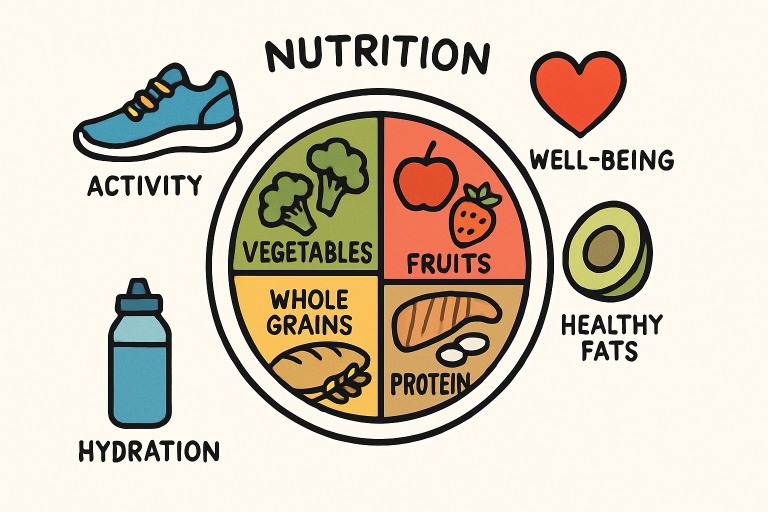Flavoring Danger: How Sweet-Smelling Vapes Hide Serious Health Threats
The Allure of Flavored Vapes
Over the past decade, flavored e-cigarettes have dramatically transformed the landscape of smoking alternatives, captivating a new generation of young adults and even teens with enticing aromas and dessert-inspired tastes. Beyond the technological novelty of vaping, manufacturers have found success in producing a stunning variety of flavors — from juicy fruit and cool mint to rich vanilla custard and cotton candy. These products cleverly disguise the harshness of nicotine and other harmful chemicals, making vaping seem less threatening than traditional smoking. The inclusion of sweet, fruity, and sometimes nostalgic flavors casts e-cigarettes as harmless indulgences rather than tobacco products. This sensory appeal isn’t just a surface-level marketing gimmick—it serves as a powerful gateway for new users, particularly young people, to start and continue vaping. Many adolescents who might never have considered trying cigarettes are enticed by these appealing flavors. Yet, beneath the sweetness lies a serious and often overlooked concern, highlighted in recent research and by public health advocates who are questioning Why vapes aren’t a safe smoking alternative.
Appealing flavors such as mango, cotton candy, and crème brûlée can make vaping look harmless, fun, and even trendy, but the reality is starkly different. Each inhalation delivers not only nicotine — a highly addictive substance — but also a cocktail of chemical compounds, many of which were never intended to be inhaled. These chemicals are responsible for the flavors and aromas, and their long-term health effects are still being uncovered, leading many experts and health officials to sound the alarm about the real dangers masked by these sweet scents.
Hidden Hazards in Flavoring Chemicals
While regulatory agencies, such as the Food and Drug Administration (FDA), often consider many flavoring agents safe for consumption, their safety profile changes dramatically when these substances are inhaled. The process of heating and vaporizing chemicals such as diacetyl, which is widely used for its pleasant, buttery taste, can cause them to transform into new substances that are far more toxic to the sensitive tissues of the respiratory tract. Diacetyl has earned special notoriety for its role in causing “popcorn lung,” a serious medical condition formally known as bronchiolitis obliterans, which leads to irreversible scarring and loss of lung function.
What Makes Inhalation Risky?
Unlike digestion, where harmful substances are broken down or filtered by the stomach, liver, and intestines, inhaling aerosolized chemicals sends them directly to the lungs without any protective processing. The lungs’ delicate tissues are designed for oxygen exchange and are easily damaged by exposure to foreign chemicals. Compounds such as benzaldehyde (used to create cherry flavor) and cinnamaldehyde (cinnamon flavor) have demonstrated cytotoxic effects in laboratory studies, damaging cells or inhibiting their normal function. As more research unveils the toxic byproducts of vaping flavoring chemicals, concerns about their inclusion in e-cigarettes are quickly mounting.
Respiratory Risks Associated with Vaping
Inhalation of flavored e-liquids can lead to persistent respiratory inflammation and tissue damage. Numerous studies, including findings highlighted by the American Lung Association, have demonstrated that certain flavoring chemicals trigger immune responses and directly irritate the airway linings, causing symptoms such as coughing, chest tightness, and increased shortness of breath. Alarming trends show an increased incidence of asthma-like conditions, wheezing, and bronchospasm among both casual and regular users, especially youth. Over time, this persistent irritation and inflammation can lead to chronic diseases, such as bronchitis or even permanent obstructive lung disease. The threat does not stop at short-term symptoms, as long-term exposure can permanently compromise the respiratory health of users, even in young individuals.
These findings are particularly worrisome for young, otherwise healthy individuals, some of whom are now developing severe, unforeseen respiratory conditions after months or years of vaping. Flavored vape products, so often marketed as safer or less harmful, may represent a profound and growing threat to the respiratory health of an entire generation.
Cardiovascular Concerns
Flavored vape liquids don’t only threaten lung health—their risks extend to the entire cardiovascular system. Emerging scientific studies indicate that certain flavoring chemicals in e-liquids can impair the function of endothelial cells, which form the vital linings of blood vessels. According to Stanford Medicine, these harmful effects can increase the likelihood of developing blood vessel disease, atherosclerosis, and even blood clots. When these cells lose their ability to contract and relax normally, the risk of heart attacks and strokes in regular vape users rises dramatically, especially for those who also have lifestyle-related risk factors like poor diet or physical inactivity.
Nicotine only compounds these dangers. The stimulant properties of nicotine cause blood vessels to constrict and blood pressure to rise. When combined with exposure to hazardous flavoring chemicals, the cumulative impact on cardiovascular health can rival—or in some cases exceed—that from traditional cigarette smoking. This is especially concerning for populations already at heightened risk of cardiovascular disease, such as individuals with high blood pressure or diabetes.
Neurological Implications
The neurological effects of vaping are particularly alarming for teenagers and young adults, whose brains are still developing and especially susceptible to certain substances. With their appealing flavors, these e-cigarettes amplify nicotine’s addictive potential, making it easier for young people to get hooked and much harder to quit. Nicotine exposure during adolescence disrupts the formation of neural pathways, negatively impacting the development of brain regions responsible for attention, learning, and impulse control. This impairment can lead to diminished academic performance and difficulties in acquiring new skills.
Moreover, chronic use and exposure to flavored vapes increase the risk of developing other substance dependencies later in life, a phenomenon referred to as “gateway addiction.” As attractive flavors boost the frequency and appeal of vaping, the risk of profound and lasting cognitive harm grows with each puff.
Regulatory Challenges and Public Health
The rapid expansion of the flavored e-cigarette market has left public health authorities and policymakers scrambling to keep pace. While some regions have enacted bans or restrictions on particular flavors known to appeal to youth, loopholes and uneven enforcement have allowed many dangerous products to persist in the marketplace. The aggressive marketing of flavored vape products to young people—often through social media, celebrity endorsements, and clever packaging—undermines regulatory efforts and perpetuates misconceptions about product safety. In this environment, clear, accurate, and widespread public health messaging becomes even more critical.
Public health agencies worldwide are intensifying their campaigns to educate the public about the hidden dangers posed by vape flavorings. Ensuring that both parents and teens have access to up-to-date information on the risks is essential, as is the ongoing development of stronger regulatory frameworks to shield future generations from preventable harm.
Making Informed Choices
With growing scientific consensus and a steady stream of new research findings, consumers must approach vaping with skepticism and caution. Recognizing the dangers of flavored e-cigarettes, especially for vulnerable groups like adolescents, is the first step in harm reduction. Those concerned about their own or a loved one’s vaping habits should seek out cessation programs or professional counseling. Free resources offered by public health organizations can provide crucial support to individuals seeking to quit or avoid starting tobacco use altogether. Education and support remain the most effective ways to minimize the risks associated with flavored vaping products, giving individuals the tools and empowerment to make safe choices.
Conclusion
Sweet-smelling fruit and dessert-flavored vapes may present a tempting alternative to conventional smoking, but their dangers run deep and affect many organ systems. From the microscopic and potentially irreversible damage inflicted on lung tissue to the heightened risks for cardiovascular disease and neurological impairment, the impact of flavoring chemicals in e-cigarettes extends far beyond what their pleasant aromas suggest. The full extent of these dangers is still being revealed. Being informed, vigilant, and proactive is the best line of defense against the hidden health threats lurking in that appealing, candy-scented vapor.







